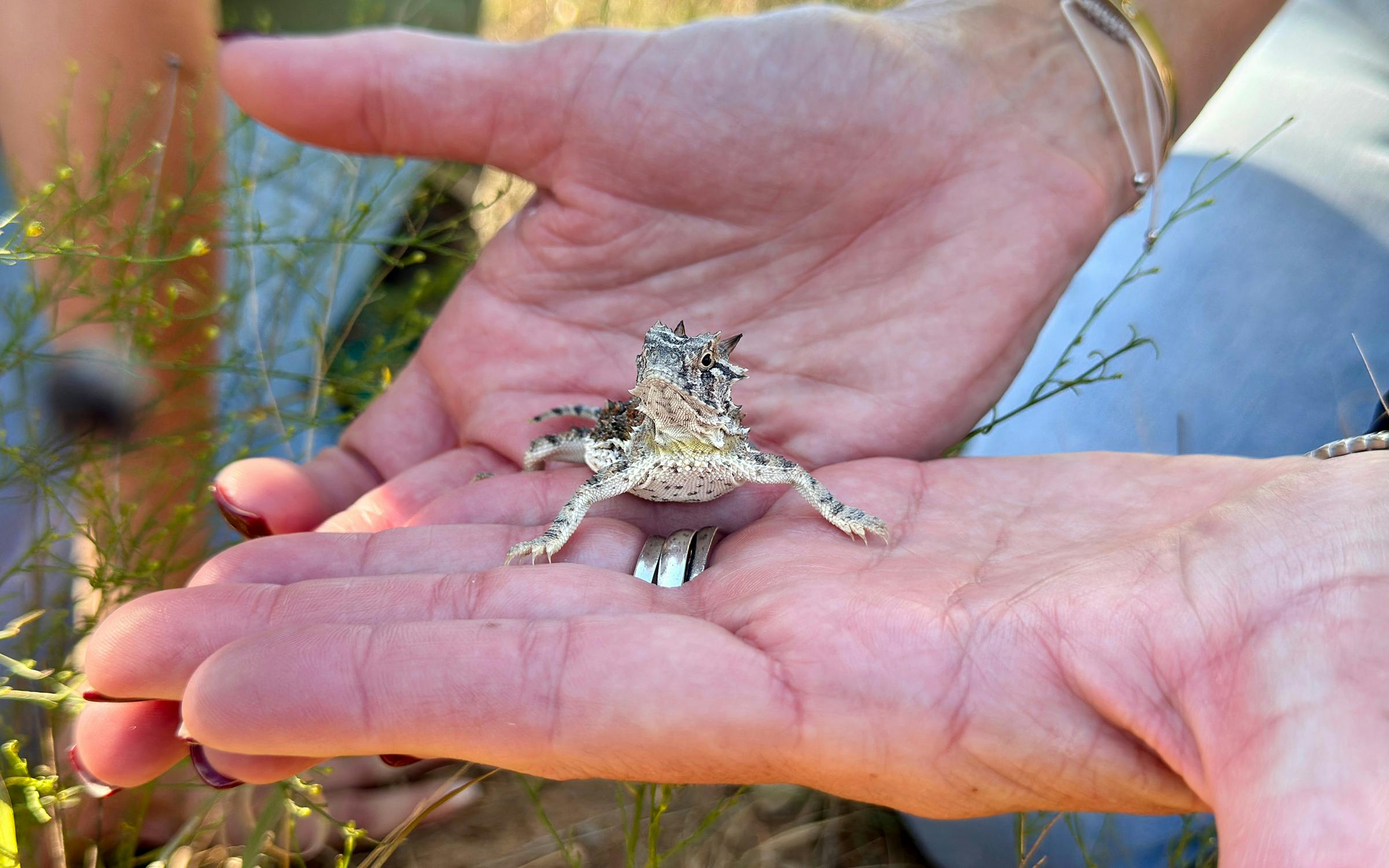WHO: Scientists at the San Antonio Zoo (and partners across the state and nation).
WHAT: Fifty newly freed lizard hatchlings in Blanco County.
WHY IT’S SO GREAT:
The Texas horned lizard, affectionately called the horny toad or horned frog, is in trouble. The population of the official Texas state reptile has steeply declined in the Texas Triangle—the region bounded by the state’s biggest cities, where more than 70 percent of Texans live—to the consternation of not just biologists but also Texans who grew up seeing the spiky, four-inch-long critters everywhere.
“The most common calls and questions I received from the public when I was the state herpetologist [a scientist who studies reptiles and amphibians] for Texas Parks and Wildlife were related to horned lizards,” Andy Gluesenkamp told me. “ ‘What happened to them? What are you doing about it? And where can I get some to put back on my property?’ ” The disappearance of the horned lizard feels to many Texans like the loss of a piece of the state’s identity. “Everyone’s obsessed with horned lizards, to the exclusion of other reptiles and amphibians. This is the one Texans really care about,” Gluesenkamp said.
Gluesenkamp is now the director of the Center for Conservation & Research at San Antonio Zoo, which announced last week that it had released fifty of the adorable little critters back into the wild. At the release, in Blanco County, the silver dollar–size hatchlings (the smallest of which weighed in at just 3.4 grams) leaped from volunteers’ outstretched palms into the brush. Among the attendees were staff from Zoo Miami, in Florida, where seven additional lizard hatchlings have been bred; they are slated to be released in Texas later this year. Also present was country musician Josh Abbott, who is a lizard fan.
San Antonio follows other cities that have stepped up to restore and conserve the horny toad. The Fort Worth Zoo has been breeding and releasing horned lizards since 2001 and celebrated its thousandth release in 2021. Last year the Dallas Zoo released an impressive 195 horned lizards into the wild. And smaller facilities, such as Tyler’s Caldwell Zoo, have their own repopulation programs underway. “We have the advantage of being the latest team to the table because we learned from the other efforts’ mistakes and successes,” Gluesenkamp said.
But it’s not just humans who are contributing to the San Antonio Zoo’s horny toad conservation efforts. The zoo has partnered with the Texas Horned Lizard Detection Canine Network and San Antonio–based canine-training business Chiron K9 to help keep track of the fledgling population. The network is made up of Texans who volunteer their goodest boys and girls to undergo specialized training in detecting horny toad scat, which helps scientists monitor the health and growth of the population.
The ecological benefits of horny toads are enormous, though in an indirect way. “Truthfully, unless you’re a harvester ant, which is mostly what horned lizards eat, it’s not that big a difference in the world whether there are horned lizards present or not,” Gluesenkamp told me. “That said, horned lizards are an incredibly important keystone species in terms of encouraging voluntary conservation actions on the part of private landowners.” Since 96 percent of Texas’s land is privately owned, conservation of wildlife and water can’t happen without the cooperation of landowners, Gluesenkamp said. “Conserving the horned lizard is a motivator for people to engage in that type of landscape management that they might not otherwise volunteer to do,” he said. “It motivates us to behave better.”
In the end, the species that most benefits from the horned toad’s existence may very well be us.

